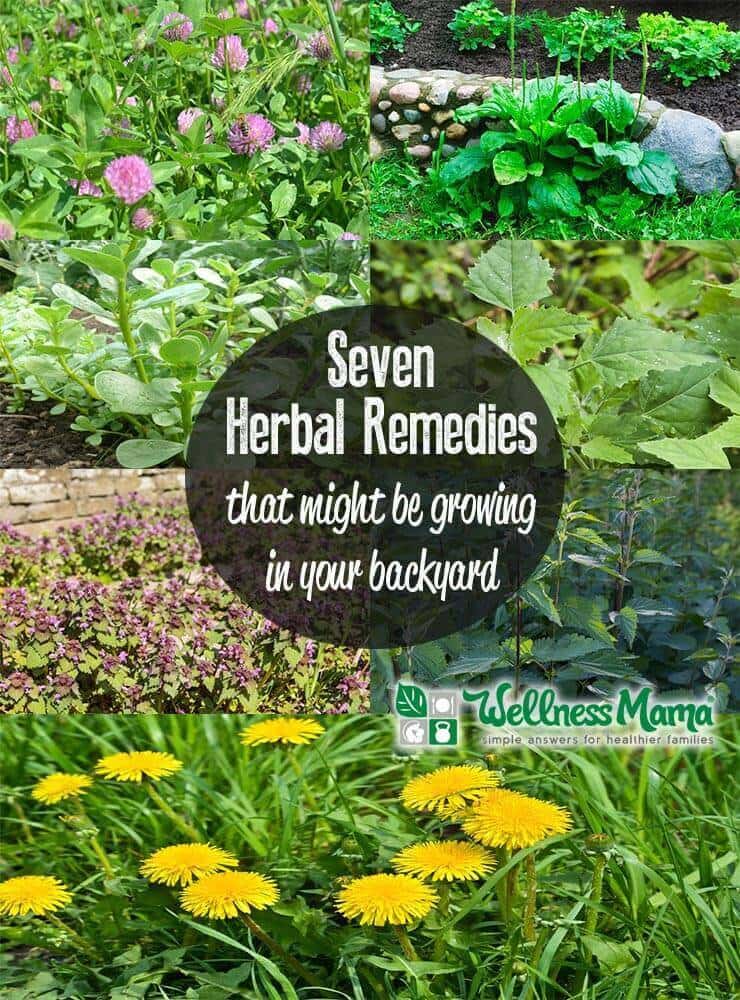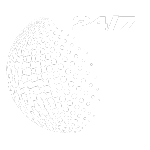
While some people are busy having the perfect lawn, I’ve learned to embrace the backyard “weeds.” Many of the plants we spend time fighting and spraying have some impressive health benefits. Here are some common backyard plants and how to use them for both food and medicine.
You may just find that the time, money, and effort needed for a manicured lawn may not be worth it after all!
I’ve learned from local horticulture professionals and wildcrafters about the beneficial herbs growing in my own backyard. Many of these grow widely in yards around the US, so take a look and see what you can discover.
Wildcrafting Tips
Before you start harvesting herbs from the yard (or anywhere) there are a few things to keep in mind.
- The Rule of Thirds – Only harvest ? or less of the plant so it can keep growing. If the plant is running rampant over the yard, then it can be fine to harvest the whole plant. For example, uprooting a dandelion and using the root. Just be sure not to take more than ? of the total plants if you want to keep the population healthy.
- Use it Up – Only harvest what you can use and have a plan to use or preserve it right away. This way they won’t spoil or lose their benefits.
- Properly Identify – Be mindful of harmful or poisonous look a likes when wildcrafting. Consult a good field guide (or several!) and/or have an experienced forager show you around.
- Collect From Clean Areas – Avoid harvesting plants from areas sprayed with pesticides, near roads, or railroad tracks. These areas have a lot of chemical contamination that affect the plant. I prefer to harvest from my own backyard or areas I can confirm are safe.
Important Note: Check with your healthcare professional before consuming any herb medicinally. However, many of these plants can be used as a food or topically.
Here are some of the backyard plants I’ve learned to love over the years!
1. Plantain
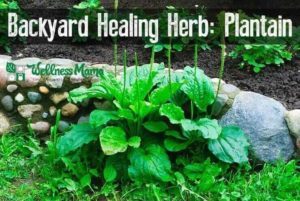
Chances are, you’ve seen this herb before and probably consider it a weed. This useful plant (not to be confused with the starchy plantain that resembles a banana) is native to many areas. You’ll often find it growing in compact areas, like pathways, and driveways.
Plantain has so many health benefits for a wide variety of systems in the body. Fresh, crushed leaves work great for bites, cuts, skin irritation, and stings to soothe skin. Taken internally, plantain helps move stuck mucus out of the respiratory tract to promote clearer breathing. Use plantain tea as a mouthwash to soothe irritated or damaged oral tissues.
The leaves, seeds, and even roots are widely useful. The seeds can be dried and ground to create psyllium fiber, a natural laxative. The roots are used to help broken bones heal faster. You can even use the immature flower spikes and young leaves for food. Read more about plantain’s benefits here.
Precautions: Plantain is widely considered safe to use, but it is a mild diuretic. It can speed the removal of prescription medications in the body, so use caution using internally if taking diuretics or other drugs.
How to Use Plantain Leaf:
- The fresh, young leaves can be used as a salad green
- Use fresh leaves as a poultice for insect bites, stings,or burns
- Chew or crush a fresh plantain leaf and apply to an insect sting to relieve the pain
- Plantain is a natural antihistamine and can help with hay fever
- Dried plantain leaf is excellent in healing salves for its skin soothing benefits
2. Dandelion
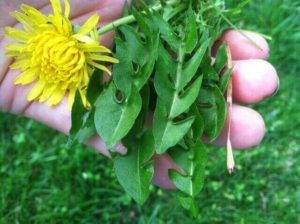
The bane of lawn enthusiasts everywhere, dandelion is actually a very useful plant. I’m sure you’ve seen dandelion around and probably have it in your yard. The entire plant can be used and each part (root, leaves, stems, and flowers) has different benefits.
Dandelion leaf makes a great bitter salad green when it’s young. The tea is diuretic, but unlike prescription diuretics, it doesn’t deplete potassium. Instead, it’s a rich source of vitamins and minerals, including calcium, potassium, and iron. Dandelion leaf helps support the kidneys and also helps with issues like gout and arthritis. Plus, it has nutrients that promote better eye health.
Dandelion root is rich in potassium and calcium and makes a delicious, earthy tea that some use as a coffee alternative. In almost every herbal healing tradition, dandelion was used for a variety of liver and gallbladder problems. You can even rub the stem’s milky sap on warts to get rid of them (avoid if you have a latex allergy though).
How to Use Dandelion Leaf
Though you can buy dandelion root and dandelion leaves pre-dried and pre-harvested, it’s such a simple herb to harvest yourself. These are some of my favorite uses:
- Dandelion leaf in tea for a nutritive herbal tea
- Use in a poultice externally for skin irritations
- Bread the flowers and pan fry them for a nutritious treat
- Sauté the leaves in olive oil for a nutritious treat
- Add chopped dandelion leaves to soup for extra nutrients
- Roasted dandelion root tea in place of coffee
- Dandelion flowers in iced lime tea
3. Red Clover
This tends to grow more in the spring and early summer, but red clover is another beneficial herb native to many places. It’s often recommended for hormone imbalance and for easing menopause and menstrual symptoms. Red clover has isoflavones (phytoestrogens) that help balance estrogen levels.
This herb is also rich in nutrients and makes a great addition to tea thanks to it’s mild sweetness. As an alterative herb it also helps with skin complaints when used both externally and internally. Herbalists use it for eczema, psoriasis, and to help detox the liver and lymphatic system. It’s also known to enhance circulation and act as a blood purifier.
How to Use Red Clover
These are just some of the many uses for red clover! Some of its more common uses include:
- In teas and tinctures for nutrition and herbal balance
- Externally as a poultice or tincture for skin irritation, including eczema
- In teas for persistent coughs or colds
- To help normalize hormone levels during menstruation or menopause.
Precautions: Since red clover can affect the hormones it’s important to check with a healthcare professional before using this or any similar herb. It’s not known yet if it’s safe (or not) during pregnancy or breastfeeding. Red clover can also interfere with synthetic birth control and blood thinning medications.
4. Purslane
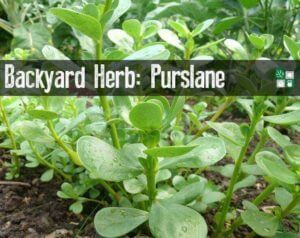
Purslane goes by many names, (pursley, duckweed, fatweed) and it grows almost everywhere. It’s a common succulent in yards, gardens and even sidewalk cracks, but has lost its popularity in the kitchen.
With a crispy texture and slight citrus taste, purslane is a very tasty green that’s high in omega-3 fatty acids, vitamins A, B, and C, and antioxidants. Purslane is anti-inflammatory and it’s high nutrition and vitamin C content make it a useful ally for illness. Like aloe, the fresh juice or crushed plant is good for soothing skin irritations and sunburn.
How to Use Purslane
There are many ways to use Purslane, but these are a few of my favorites:
- Fresh in salads
- Sautéed in oil for a nutrient-rich vegetable dish
- As a substitute for spinach in recipes
- With garlic and pine nuts for a highly-nutritious pesto
- Pickled
Precautions: Make sure you harvest purslane and not spurge (which looks similar but has a milky sap). Also, purslane has oxalic acid, which some people don’t tolerate well, especially in high amounts.
5. Creeping Charlie or Ground Ivy
Also called ground ivy and technically called glechoma hederacea, this weed grows in many places and can take over once it starts growing. And even though it’s in the mint family, it doesn’t smell or taste minty. Before hops became popular for beer brewing, ground ivy was commonly used in beer.
How to Use Creeping Charlie
Ground ivy has been a popular herbal remedy for thousands of years and used by cultures around the world. Most recently it’s been used for upper respiratory issues, to support the bladder and kidneys, and to soothe digestive upset, and menstrual issues. Ground ivy can also be used topically to soothe skin conditions.
I use it most often as a tea for headaches and colds.
Precautions: Ground ivy can cause miscarriage, so don’t use it if pregnant or trying to conceive.
6. Lamb’s Quarters

I pulled these “weeds” for months when I found them in our yard before I realized that they’re edible and highly-nutritious!
You can use lamb’s quarters leaves like spinach in fresh dishes or in cooking. They’re also easier to grow and many people find them tastier. Lamb’s quarters is naturally high in vitamin A, B, C and K, calcium, and magnesium. In fact, lamb’s quarters are considered one of the most nutritive wild foods, second only to amaranth.
The seeds are ground into a flour for baked goods, made into porridge, or used in fermented drinks.
Precautions With Lamb’s Quarters
Lamb’s Quarter has a poisonous look alike called nettleleaf goosefoot that should never be consumed. There’s a definite difference in their look and nettleleaf goosefoot has a terrible smell, but it’s important not to ever confuse the two. This post has a side by side comparison and other good info.
Like spinach and many other greens, lamb’s quarters is high in oxalic acid and should be consumed in moderation, especially by those with conditions aggravated by oxalic acid. Cooking reduces much of it and makes this and other greens safer to eat.
7. Stinging Nettles
If you have nettle growing in your yard, you probably know about it. They tend to leave an uncomfortable and itchy rash if you touch them with bare hands. Fortunately, the tiny acid-filled needles that cause the stinging fall off when cooked or boiled. You can even make nettle chips from the leaves (similar to kale chips).
I add nettle to my pregnancy tea because it’s high in vitamins and minerals. You’ll find vitamins A, B, C, E, and K, calcium, magnesium, phosphorus, potassium, silica, iron, and zinc. Since it’s so high in nutrients, nettle is great for building the blood and supporting overall vitality. Nettle is beneficial in many other ways too.
Nettle is a potent natural anti-inflammatory so it’s great for itchy watery eyes, sneezing, and runny nose. It helps calm the histamine response in the body that comes with allergies. There’s also been lots of research on nettles role in helping with metabolic disorders. Nettle can help lower blood sugar levels and fat levels in the blood and normalizes blood pressure.
Nettle leaf is also great for thick, shiny, healthy hair and I’ll use it as a hair rinse or in hair growth serum. The root helps with prostate problems, and nettle seed has a positive effect on damaged kidneys.
Precautions With Nettle Leaf (With and Important Caveat!)
Stinging nettle is probably most recognized by its stinging properties. If you want to avoid the irritation, then be sure to wear gloves when harvesting. However… nettle sting is actually really good for you too!
The leaf has formic acid, an anti-inflammatory that can help with nerve pain and inflammation. People will use it for relief from neuropathy, nerve pain, arthritis, tendonitis, and other uncomfortable inflammatory issues.
Final Thoughts On Backyard Herbs
There are so many different plants all around us, we just have to take a moment and observe. Connect with some seasoned herbalists in your area, get a good field guide, and start exploring!
Have you ever wildcrafted backyard herbal remedies? I’d love to hear about it!
